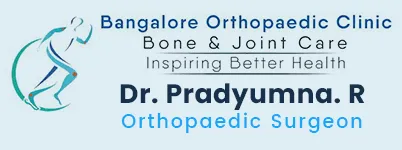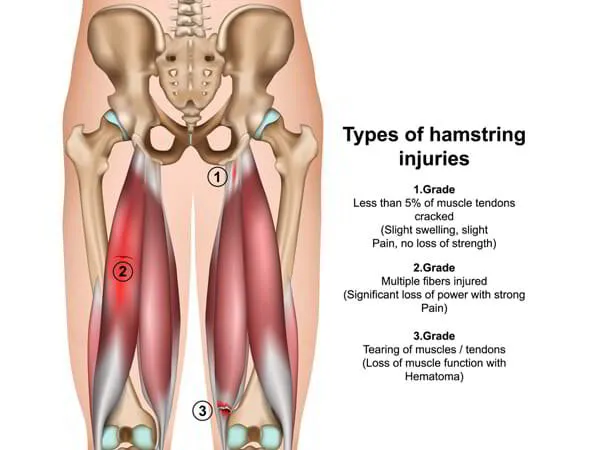Proximal Hamstring Repair
Home / Area of Specialties / Hip / Proximal Hamstring Repair
What is Proximal Hamstring Repair?
Damage to the hamstring muscles can a debilitating, painful condition and can be associated with chronic pain. Some hamstring injuries generally occurring in the middle of the muscle belly, may heal completely without the need for surgery. However, in a few cases where the hamstrings are injured at the top end, the tendon can pull off the bone. In such cases, surgery is usually recommended to reattach the damaged tendons. Proximal Hamstring Repair is a surgical procedure for treating the proximal hamstring tear. The repair surgery aims to help in regaining the support to the femur and enable us to extend and flex our legs.
What are the different grades of Proximal Hamstring injury?
These injury can be a complete tendon rupture or incomplete/partial tears. When it happens in the teen-age patients, the bone with tendon attached is often pulled away or fractured from the pelvis (ischium). However, in mature and adult patients, the tendon is usually pulled away or tears off the bone of the ischium at its attachment point. Occasionally the tendon may tear in its mid-substance leaving a part of tendon still attached to the bone. Often this type of injury is a partial tear.
Injuries most commonly seen in 3 distinct population studies are:
- Adolescents: Skeletally not mature, can avulse the hamstring origin with a fragment of bone from the ischium.
- Young, skeletally mature, athletic individuals.
- Older patients: Usually in their 50s with sedentary lifestyles or participate in recreational sports.
The three grades of hamstring injury are:
- Grade I - Strain: A mild muscle strain, usually recover in a few days.
- Grade II – Partial tear: A partial muscle tear.
- Grade III – Severe tear: A complete muscle tear or tear of an attachment. This may take weeks or months to heal.
What are the symptoms of Proximal Hamstring injury?
You may experience different symptoms depending upon the severity of your injury as listed below.
Grade 1 symptoms:
- Sudden, radiating pain in the back of your thigh.
- Though your strength is not affected, it will be hard to move your leg.
Grade 2 Symptoms:
- Very painful feeling in the thighs
- Swelling of thighs
- Bruising visible in the affected area
- Loss of strength in your leg.
Grade 3 Symptoms:
- Worse pain in the thighs
- Tenderness in thighs
- Swelling and bruising.
- You might have felt a popping sensation when the injury happened.
- Bump or knot in your thigh area.
- Spasms.
- Muscle stiffness
- You may feel a gap in the muscle by touching it.
- The back of the leg will feel tight
What are the treatment for Proximal Hamstring
Injury?
Initially, your surgeon may recommend some measures to reduce pain and swelling with icing, analgesia, and the use of crutches to assist in walking. As the pain starts to settle some gentle movement of the leg will be allowed as per the consent of your surgeon. But, in cases where the diagnosis of a proximal hamstring injury is made, your surgeon will decide on treatment options based on the severity of the damage.
Conservative treatment: This is usually a rehab program appropriate for sedentary seniors or in those with partial tendon tears where a significant proportion of the tendon is still intact. Conservative treatment is also undertaken in most cases of bone avulsion fracture where the bone fragment is sitting close to the ischium. The RICE (Rest, Ice, Compression, and Elevation) protocol is effective for many athletic injuries.
Surgical repair: It is recommended for young and physically active patients or among the older patients who are able to continue with sports or active recreation where there is a complete tendon tear. It usually involves an overnight stay in the hospital, and the procedure is performed under a general anesthetic. Your surgeon will make an incision in the buttock/upper thigh. The torn tendon end is identified, mobilized if it is retracted down into the thigh and then repaired back down onto the bone using bone anchors or transosseous sutures. The sciatic nerve is protected during the surgery. The operation takes about 90 minutes and you will be kept under observation for 2-3 hours.
Post-operative care after Proximal Hamstring Repair
After surgery, you will be given painkillers to keep you comfortable. You must rest lying on your back with a pillow under the knees, to allow the hamstring to be in a relaxed position. You may have to use crutches and put only a small amount of weight on the ball of the foot to maintain some flexion in the knee. At the post-operative review at 2 weeks, stitches will be removed and gentle and controlled hip and knee movement will be advised and as you are comfortable, crutches can be gradually weaned. At 6 weeks, some resisted hamstring activity will be recommended, and possibly a return to light running at 3-4 months. Return to competitive sports may be considered after 6 months. All these timeframes are guidelines and may vary according to the injury and the individual.
What are the risks and complications?
Every surgery has some risks and complications. A few complications associated are:
- Superficial infections
- Deep wound infections
- Rerupture
- Weakness
- Sitting pain
- Neuropraxia (injury to the sciatic nerve)
- Weakness and difficulty sitting
- Hamstring deformity
- Scarring

